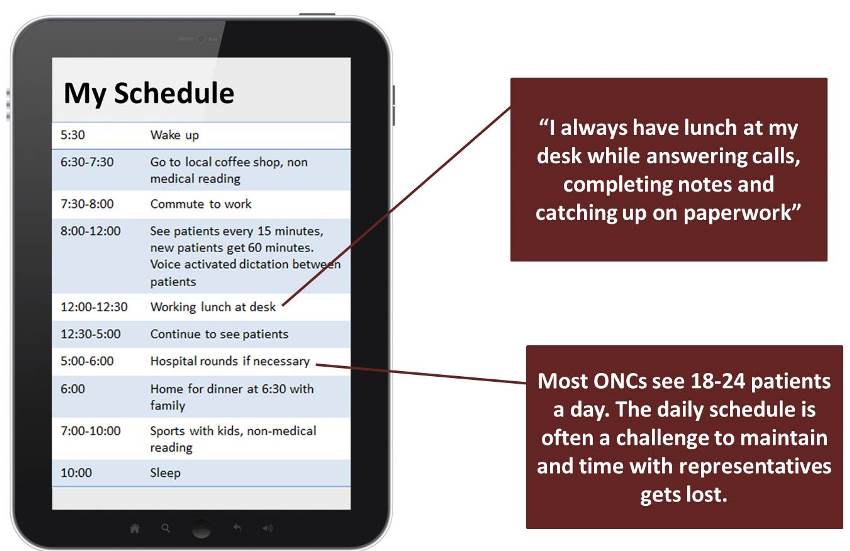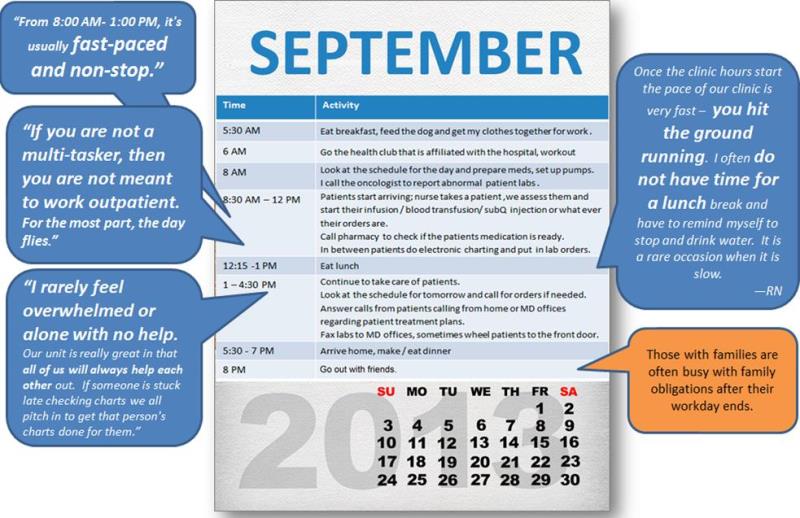Editor’s note: Tom Donnelly is vice president of MarketVision Research, Philadelphia.
In business, regardless of whether you’re selling high-end construction equipment, specialized medical devices or laundry detergent, sales numbers alone tell an incomplete story of how the brand is performing with customers. Too frequently the measurements of success are focused on specific engagements that customers have with brands, often strictly transactional:
How likely are consumers to purchase our product? Did they re-buy our product? How frequently did they purchase our product and what are their general spending patterns?
This tells part of the story but only provides a limited perspective for brands. What’s missing is a deeper understanding of customers, a full picture of the challenges they face in their daily lives and how those challenges might impact their relationship with you and the brand.
In the world of oncology, the challenges are many. A large pharmaceutical company – an emerging leader in the oncology market – set out to gain a deeper understanding of their customers as part of a company-wide know-your-customer initiative and the results were far more impactful than they had anticipated. The result wasn’t just a greater appreciation for the balancing of roles that these professionals have to play but a very clear and surprising look into the emotional expense of their positions.
A day in the life
The oncology team partnered with MarketVision Research to explore the lives of both oncologists (ONCs) and oncology nurses (ONC RNs) to provide a more complete picture of their daily challenges, professionally and personally. The oncology team developed a series called, “A day in the life” in order to obtain a deep understanding of these customers, by gaining insights into what a typical day in their life looks like. The study looked to:
- Obtain a detailed perspective into a day in the life of an ONC (Phase I) and ONC RN (Phase II) – including their interactions with: colleagues, other staff members, patients/caregivers and oncology sales representatives.
- Understand the key challenges that ONCs and ONC RNs deal with daily, how they manage these challenges and what their overall thoughts are about their career.
- Identify key similarities and differences between the life of an ONC and the life of an ONC RN.
- Discover how oncology-focused companies – and their sales representatives – can improve their approach, and subsequently their relationship, with ONCs and ONC RNs.
A two-phased approach
There were some inherent challenges with conducting this research. Specifically, the target respondents are specialized health care professionals who don’t have a lot of time to participate in research – or anything else for that matter. Their time is precious so research would need to accommodate their schedules. How do you reach these professionals for an in-depth look at their daily lives while allowing them to go on with their daily routine and at the same time capture in-the-moment or near-the-moment commentary? The solution was to combine innovation with a bit of old-school technology for a two-phase creative ethnographic approach.
In Phase I, voice mail diaries were collected a few times a day (mid-morning, mid-afternoon, evening) for a few business days to capture interactions, thoughts and feelings a short while after the event. Respondents were each given a packet which contained an introduction letter explaining the research and a set of cards which contained open-ended questions to be answered via voice mail. A standard set of questions appeared on all cards which asked about interactions during that time period with patients, staff and sales representatives. Other questions were specific to the time of day. For example, in the morning some questions were about their thoughts as they prepare for the day, while in the evening questions were about their reflections on the day’s highs and lows. On the last day, final questions asked about their thoughts on their careers and the state of the U.S. health care system.

In Phase II, online discussion boards were conducted for a few business days to ask follow-up questions lingering from Phase I. Topics included: background/daily schedule, reps/manufacturers, administrative issues, patients, specific treatment questions, thoughts on career and U.S. health care.
Discovery
This two-phase approach provided some fascinating insight into the lives of these professionals. There are some similarities between ONCs and ONC RNs as it pertains to their approach to their positions but there’s a great deal of difference when it comes to the emotional engagement they can have with patients.
Below we explore the results for specific areas such as flexibility of schedule and how this differs between ONCs and ONC RNs (Figure 2). In general, an ONC has more pressing demands for his time and is able to provide less in terms of deep patient care.
- ONCs find that their lives are overflowing with professional obligations and on a daily basis they are unable to fit everything in. Often, “me time” is sacrificed (Figure 3).
- Some ONC practices allow more schedule flexibility but the daily schedule is still demanding and very full.
- Oncology nurses are busy but their schedules are more predictable than and not as chaotic as oncologists (Figure 4).
- Most nurses have a set four- or five-day schedule, which may include weekend time. When they are at work, there is very little down time. However, most feel that they can always rely on their co-workers to help them out.

Powerful emotional capture
The comments provided from the transcript provided a nice snapshot of the daily lives of these professionals but the greatest impact from this research came from the voice mails they left in response to specific questions throughout the day. What the transcript isn’t able to adequately capture is the emotional expressions or the way the professionals explained their responsibilities and pressures. A hesitation here, a sigh there, an ONC stifling a sob while he talks about losing a patient and the toll it takes on him. You can read their words in the transcript but you can’t feel the emotions behind their responses. It’s very personal to them and hearing them talk about it instead of reading their quotes takes the power of the insight to an entirely different level. When presented to the various client teams, the words as spoken by the ONCs hit the mark, giving them a very real sense for the meaning behind the words. The results were very powerful.
Assessment of voice mail ethnographic technique
The technique has several advantages. It was simple, convenient and nonintrusive and allowed participants to respond to questions with no one to judge or observe them. The responses were able to capture near in-the-moment thoughts and feelings. Some voice mails were akin to a therapy session, with no moderator or one-way mirror to judge. Additionally, the voice mail ethnographic technique:
- is efficient, as most people carry a cell phone, making a call is easier than a smart phone survey;
- captures details;
- allows for expressing yourself by talking, which frees respondents from writing perfect sentences and allows for more free-flow thinking;
- captures emotions that may not have been otherwise obtained; and
- can be deployed for specifically defined moments.
There are some disadvantages to the technique that should be considered or counteracted:
- no probing, unless done in the follow-up phase;
- respondents may cherry-pick questions, especially if there are too many;
- length and quality of the responses can vary, suggesting it is a good idea to mitigate with an introduction letter to set expectations; and
- the quality of the audio recording can vary.
Humanizing insights, socializing the impact
The research was well-received by the client team and was what they needed in order to connect more deeply with their customers but as is the case with many research projects, the insights needed to be properly socialized so the results and impact of the research live on. Socializing the insights in this case meant having a strong collaborative effort in place between the oncology team of the large pharmaceutical organization and MarketVision, working through materials in an iterative process and ultimately developing a program of systematic sharing of results throughout the organization.
Collaboration was crucial to the success of the socialization effort. By working iteratively through material and ideas, the teams put together a top-notch program for sharing.
The socialization program occurred at different levels and at different times. Poster sessions were created that allowed team members to explore some of the relevant outcomes, to ask questions and read more about specific themes from the research. There were multiple meetings held with different teams throughout the organization and ultimately the research was on display throughout the entire office, in the form of posters that included quotes from customers or other relevant insights the stakeholders could use in their business.
Finally, the results from this research are now part of the onboarding process for all new hires in the oncology space at this large pharma organization. Every employee who comes through the door is learning about the lives of ONCs and ONC RNs – understanding more completely their challenges, responsibilities and limitations – and is able to use this information to improve their engagement with customers. There’s no replacement for truly knowing your consumer and putting that knowledge into action.
